Project Details...
HEUERSDORF ------------------- These images were taken in a town called Heuersdorf, East Germany. Heuersdorf was a 710 year old village that has since been demolished to make way for the expansion of a nearby lignite coal mine. Lignite or brown coal is the lowest rank of coal and is used almost exclusively for steam-electric power generation because of its high moisture content. It has a much lower energy content than normal coal and therefore is not traded internationally and tends to be used very close to where it is mined. When burned, it releases far more greenhouse gases than normal black coal. Most environmentalists would argue that brown coal should be left in the ground, but increasingly it is being used because of the large amounts of it left on the planet, and also it has become more economical because of higher oil prices. There was fierce opposition to the destruction of Heuersdorf village since Mibrag proposed its demolition in 1994. However, after many long legal battles, the village residents were forced to accept financial compensation offered by Mibrag and to leave the town. They were unable to finance the court case any longer. Mibrag began demolition of the town in 2008 and has begun expansion of their vast lignite mine. The company's geologists believe a 1.2-billion-ton deposit of lignite, lies underneath 29,344 square miles, near the town of Stassfurt. If it is recoverable, it would be one of the largest contiguous coal deposits in Germany and would yield nearly 50 years of revenue for the company. However, it would also turn vast areas of the countryside into a lunar-like landscape. The German mining act that allows communities to be devastated can be traced back to a law enacted in 1935 during the Third Reich in preparation for war. The essence of that act was retained after 1945 in both German states to enhance employment and diminish energy imports. More than 300 communities and settlements have been devastated by lignite mining in Germany.
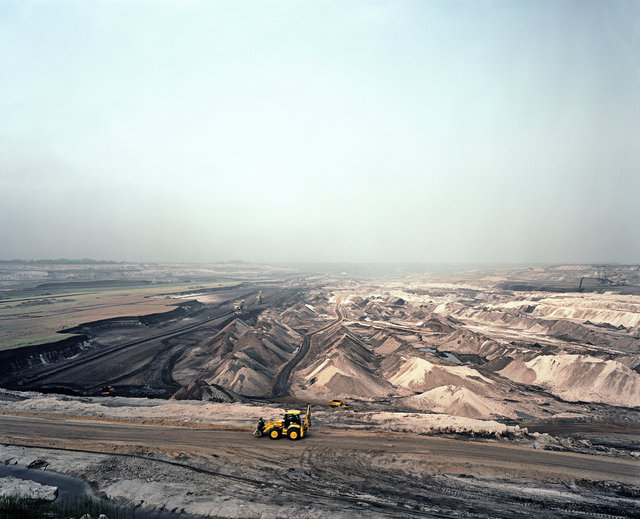
Mibrag Lignite Mining, East Germany
Mibrag's lignite mine which is currently expanding into the surrounding landscape. It has swallowed up the town of Heuersdorf and is threatening the future of a number of other local towns.
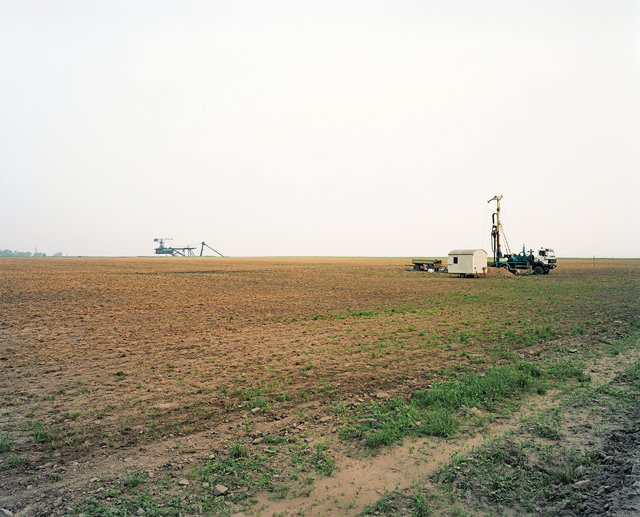
A drilling rig in a field next to Mibrag's lignite mine, close to Heuersdorf. A bucket wheel excavator sits at the mine's edge in the distance.
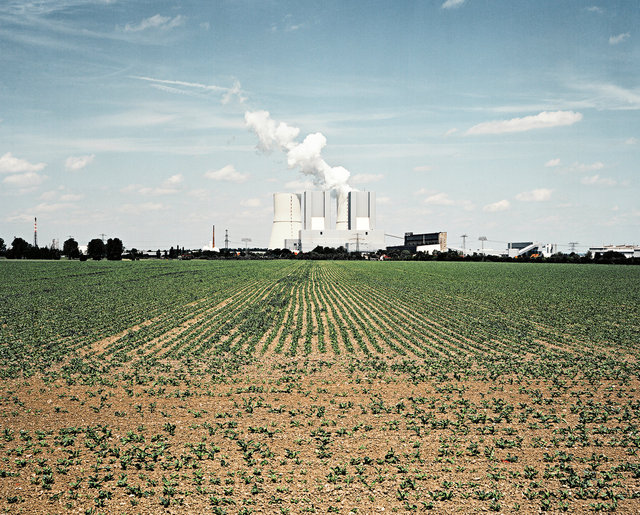
Lippendorf Power Station
Lippendorf is located very close to Heuersdorf. It is owned and operated by Vattenfall. The power station is powered by lignite coal and is the primary customer of Mibrag's mine that is expanding and led to the destruction of the town of Heuersdorf.
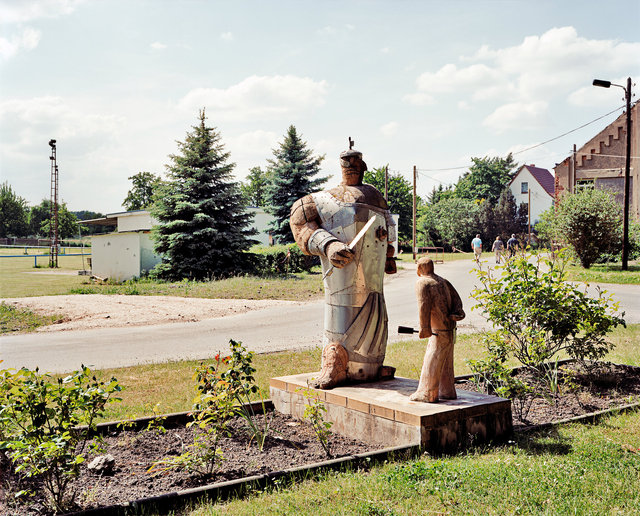
David & Goliath
A David and Goliath sculpture in the middle of Heuersdorf, representing the struggle between the small community and the large mining company. It was commissioned by the villagers in 1997, when they felt they had a chance of stopping the mine's expansion.
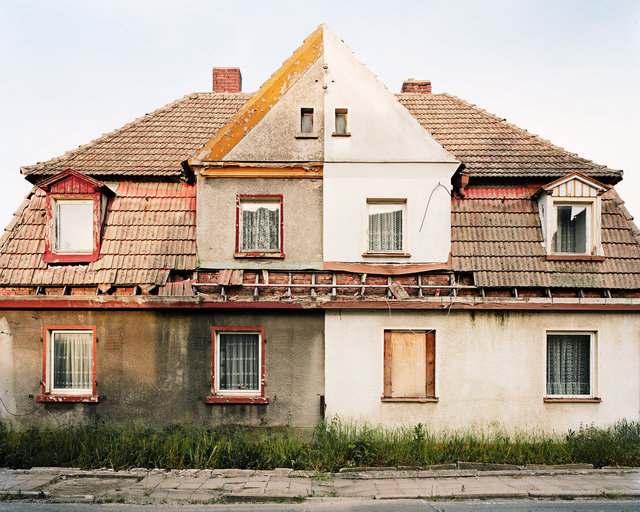
Traditional houses in Heuersdorf. These have now been destroyed and the families relocated to nearby villages.
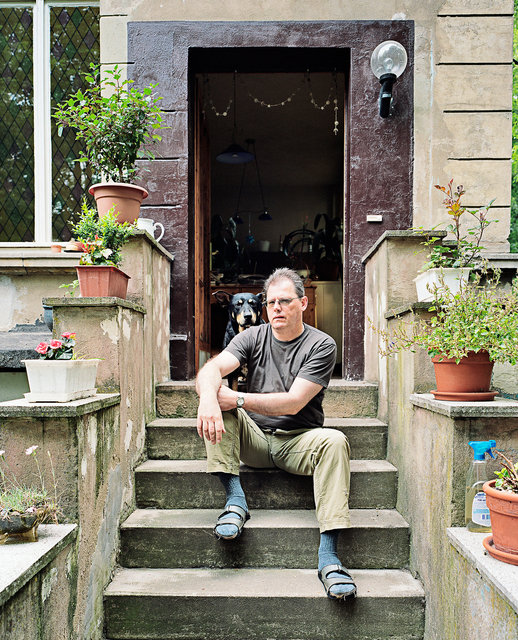
Bernd Gunther
Bernd sitting outside the manor house he rented in Heuersdorf. He campaigned passionately against the expansion of Mibrag's mine and was one of the last to leave the town before demolition began.
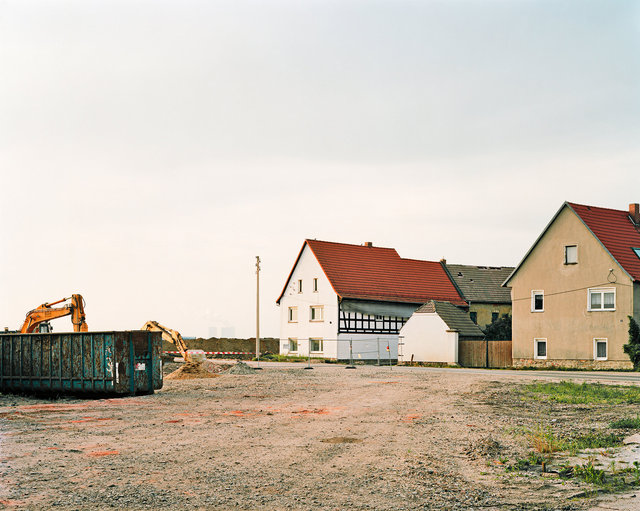
Demolition begins
The edge of Heuersdorf after the demolition of the town had begun. Lippendorf power station can just be made out in the distance.
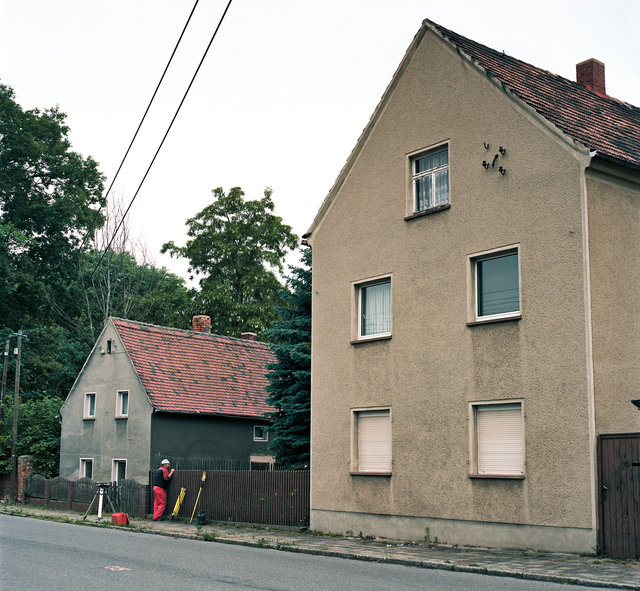
A surveyor assesses one of the houses prior to the town's demolition.
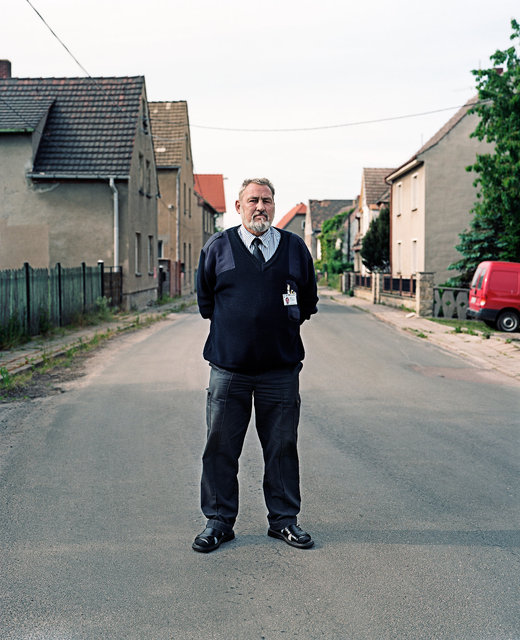
Wolfgang Caspari
Wolfgang was a security guard employed to watch the empty houses and to keep squatters out of the town, as it was slowly vacated by the residents.

Abandoned farm buildings, some of which are over 300 years old.
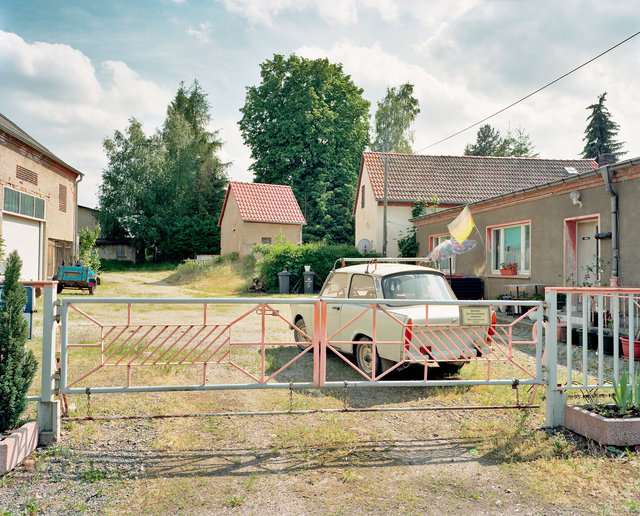
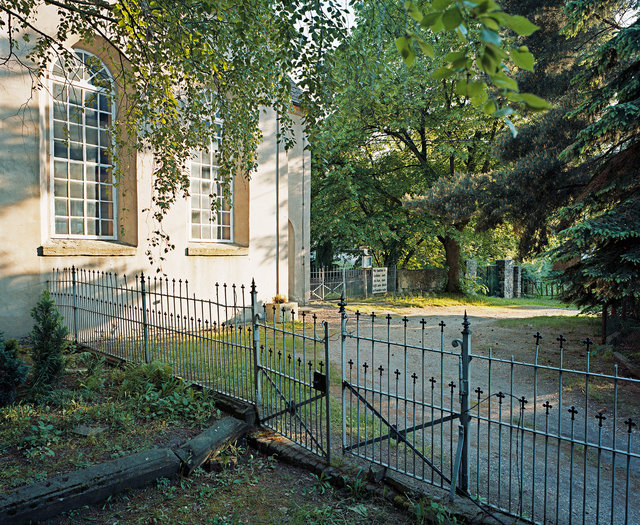
Tabor Church, Heuersdorf
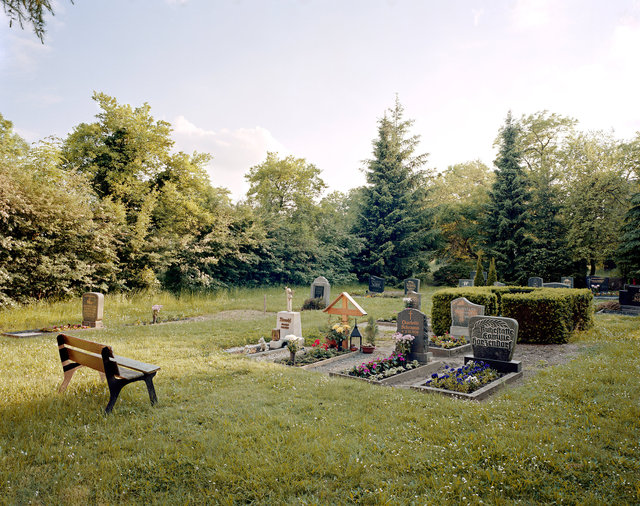
A graveyard beside the Tabor Church in the centre of Heuersdorf. The graves have since been dug up and relocated.

The Last Sermon
An organ player practices for one of the last sermons in The Tabor Church, which was built cerca 1866. The church has now been destroyed.
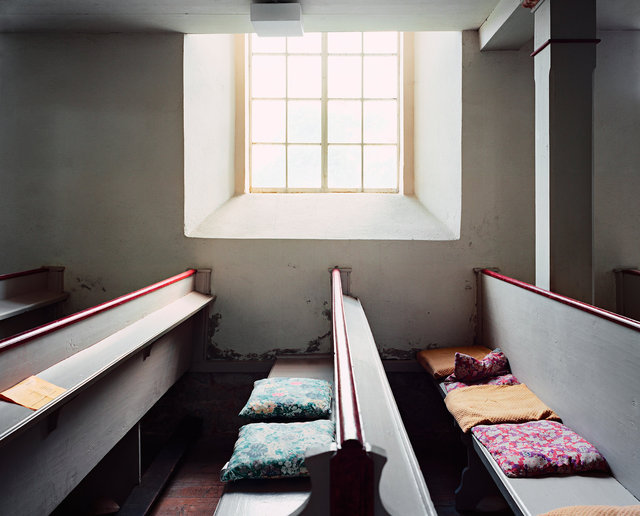

Jeffrey Michel, Deutzen
Jeffrey, an American living in the nearby town of Deutzen, played an important role in advising and helping residents in Heuersdorf.
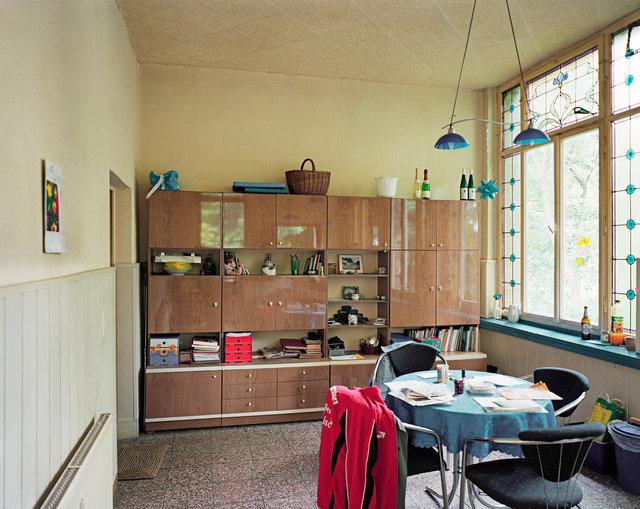
Memories
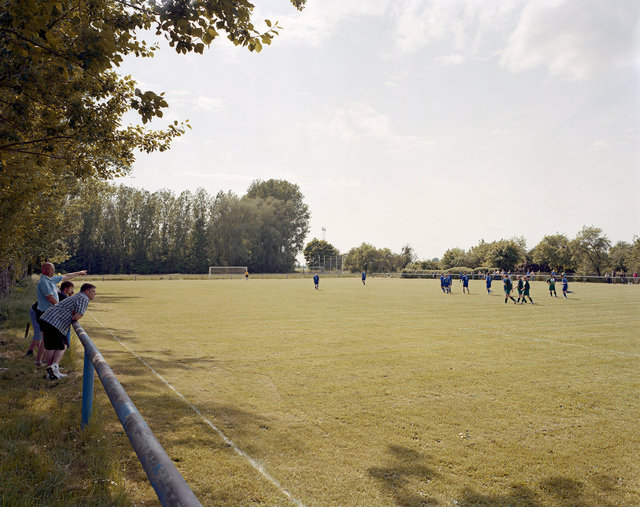
SV Heuersdorf, the village football team. This was one of the last league games played in the village before the town was demolished.
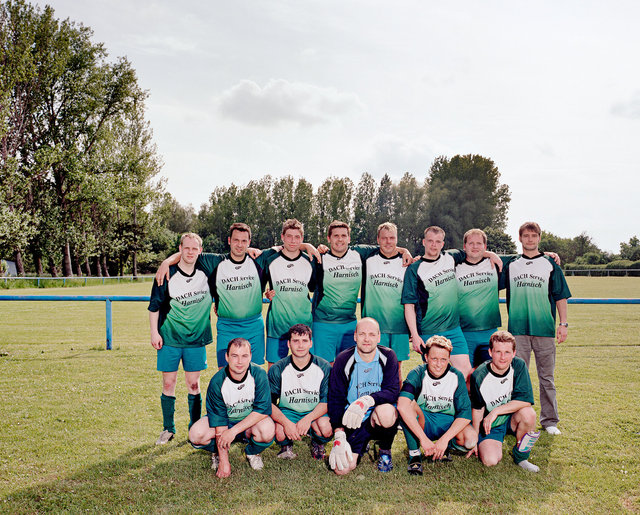
SV Heuersdorf

Local residents chat and dance at a community event a few months before Heuersdorf was due for demolition.
